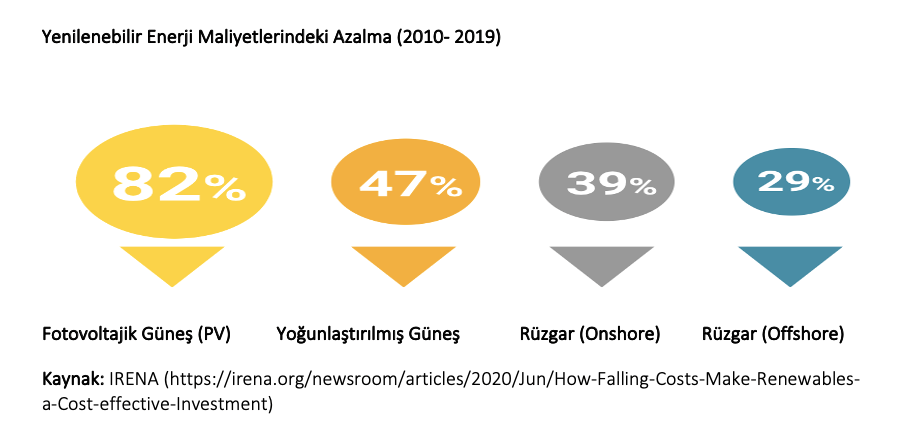However, in recent years, some problems such as climate change and global warming caused by the long-term use of fossil fuels and the depletion of fossil fuel reserves have come to the fore. At this point, renewable energy sources, which are expressed as a clean, local and endless energy source as a good alternative to fossil fuels, have begun to shape the economic and political decisions of countries. Especially since the 2000s, the share of renewable energy in the total energy share of countries has gradually increased. The share of renewable energy investments in this increase is also of great importance. The increase in renewable energy investments requires adherence not only to the energy policies of the countries and regulations that directly lead to the further spread of renewable energy, but also to a wide variety of economic policies and strategies, technical and infrastructure factors, financing and market conditions.
In addition to these factors, one of the most important factors in the increase of renewable energy investments is the cost reductions created by technological progress. According to the report published by the International Renewable Energy Agency (IRENA), "Renewable Energy Electricity Production Costs in 2018", when evaluated in terms of electricity production costs in many parts of the world between 2010 and 2018, biofuels, hydroelectric, geothermal, solar, land and sea wind energy sources. It has been stated that the cost of electricity is in the range of fossil fuels. The figure below shows the reduction in renewable energy costs between 2000 and 2019. As it can be understood from the figure in question, the two sectors with the highest decrease in electricity production costs in these years are the solar energy and wind energy sectors.

According to the figure, the renewable energy source that has shown the most cost advantage since 2010 is solar energy. While the cost reduction experienced in the last 9 years in photovoltagic solar energy is 82%, it is 47% in concentrated solar energy. In addition, onshore wind cost reduction was 39%, while offshore wind reduced costs by 29%. Undoubtedly, one of the biggest obstacles to renewable energy investments is that these resources are seen as more costly when compared to other energy resources. However, the above-mentioned cost change is of great importance in removing the obstacles to investments in recent years. When all these are evaluated together, the cost reductions in renewable energy resources are very important in affecting the amount of investment made in these resources.
Assit. Prof. Dr. BAŞAK ÖZARSLAN DOĞAN

